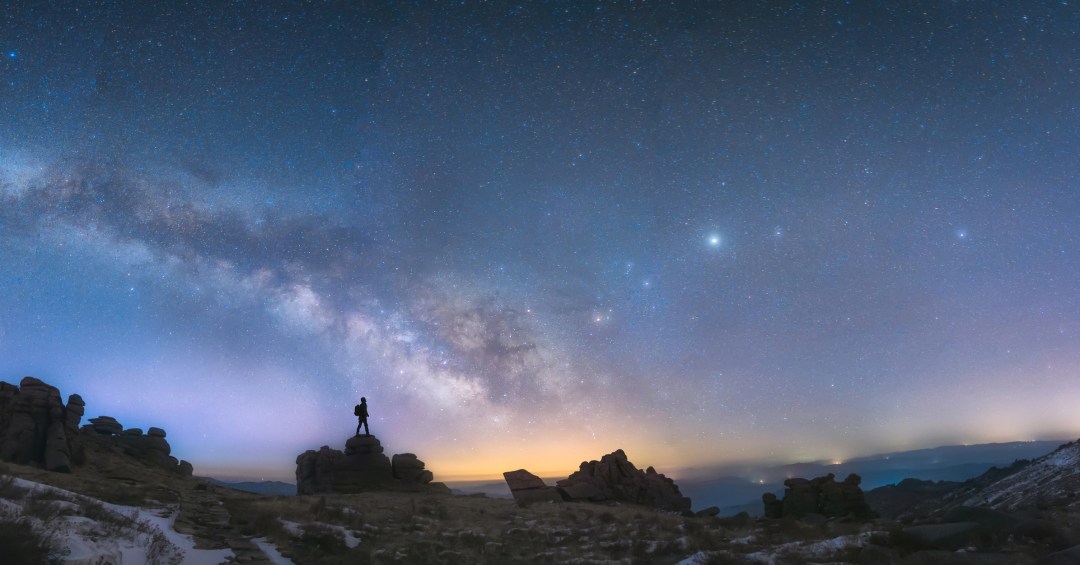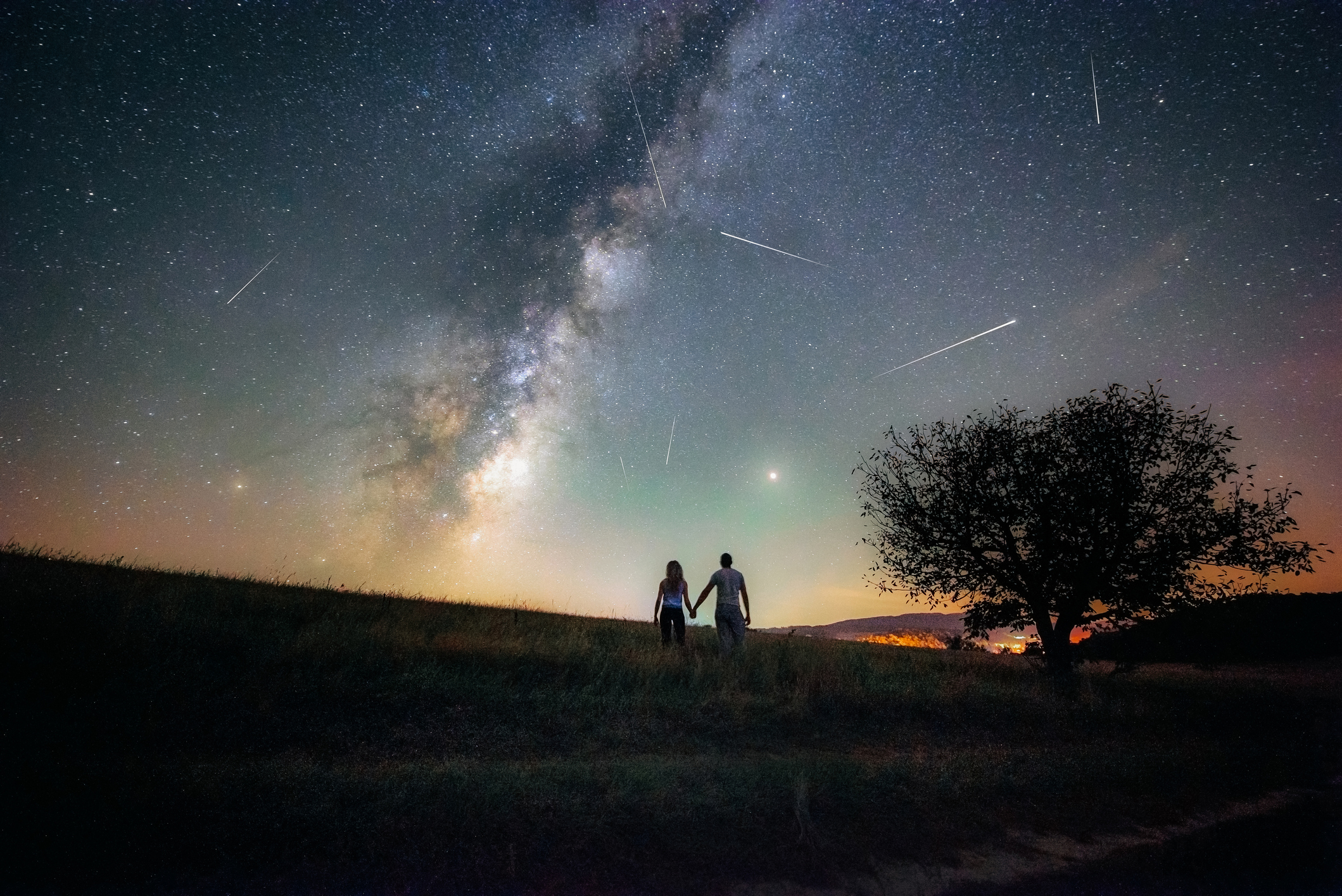How to de-stress and unwind under the stars
When was the last time you looked up at the night sky with your whole attention, with wonder and curiosity? Here, Mark Westmoquette, astronomer, mindfulness teacher and author shares how to de-stress and unwind by stargazing under the night sky.

When was the last time you looked up at the night sky with your whole attention, with wonder and curiosity? Here, Mark Westmoquette, astronomer, mindfulness teacher and author of the books ‘Mindful thoughts for Stargazers’ and ‘The Mindful Universe’, shares how to de-stress and unwind under the stars.
It’s been a hectic day – you’ve been on the go from the moment you got up this morning and you just need to unwind. You’ve heard of the de-stressing benefits of spending time in nature, but did you know that there’s just as much nature in the night-time sky as there is in the forest or beach in the daytime?
For many people, stargazing is associated with maps, coordinates and science facts. These can make the stars seem cold, distant and maybe even irrelevant to our life here on Earth. But that couldn’t be further from the truth. Mindful stargazing is the pure, immersive experience of looking up at the night sky with inquisitiveness and wonder – and it’s something that humanity has done since the dawn of time.
Mindfulness means being present and aware of your experience, but also not judging what you find to be good or bad – or something you want or don’t want. So if the sky is cloudy, or starts to cloud over before our very eyes, that’s ok. When we stop paying attention to the whirlwind of thoughts about our life and let things be just as they are, with an attitude of curiosity and welcome, this helps us feel lighter, more spacious, calmer and more connected.
And the great thing about mindful stargazing is there’s no need to go anywhere. You can do it at home – from your own back garden, or even looking out of the window from your bed!
How to practise mindful stargazing
Go outside (make sure you’re dressed well). If you can sit or lie down under the dark sky, that would be best. But if you’re in bed already, all you need to do is open the curtains and look up into the night sky through the window (just make sure the lights are off). Whatever posture you’re in, arrange your body in such a way that feels comfortable, balanced, aligned and relaxed. Purposefully soften your forehead, your mouth, your jaw. Relax your hands.
Notice what you see. A hazy glow on the horizon maybe? Clouds? Stars? Just take a moment to observe. Try not to think about what you’re seeing, just look.
When you first peer into the dark, it can take up to 15 minutes for the eyes to fully adjust. So as your pupils gradually dilate, notice how fainter things slowly appear. If it’s clear, then you’ll start to see more and more stars studding the sky (or if not, then more of the clouds). If there’s light pollution, let that also be part of your view.
There’s no need to look around. Just fix your gaze on one part of the sky and become aware of whole of your field of vision. Stress tends to make us tunnel-visioned. When we purposefully tune into our visual periphery it sends signals to the body that it’s okay to relax. Allow your eyes to be filled with the vista of the night sky.
If thoughts arise about what exactly you’re looking at (which constellation? what type of cloud?, etc), or any other kind of thoughts arise, don’t worry. Put them aside. Do what you can to really immerse yourself in what you’re seeing – including the horizon, trees and other parts of landscape.
If you can see a star or two, consider that the light you’re seeing is ancient. Most stars in the night sky are hundreds to thousands of light-years away – meaning the light left them aeons ago and has been travelling through the vastness of space ever since, only to enter your eye right now. Isn’t that amazing?! Appreciate that we’re here, in this moment, on this tiny planet we call Earth, orbiting a very ordinary star we call the Sun. And we’re looking up at thousands of the Sun’s neighbours… our neighbours. Because the cosmos you’re looking at is our home.

Instead of feeling like we’re observing it from a distance, when we look up at the night sky with wonder and awe (rather than with maps and facts), we may start to feel part of our great cosmos. We are, after all, “made of star stuff” (as the great populariser of astronomy Carl Sagan once said), meaning that the carbon, nitrogen, oxygen and other elements that make up our body were originally formed inside a long-forgotten star. It’s not that the worries and stresses of your day aren’t important, but perhaps this expanded view on things can help you put things in a new perspective.
When I was studying astrophysics, I would get stressed out with deadlines and difficult colleagues as much as anyone else. I got lost in reason, logic and facts and forgot about the pure wonder of looking up at the heavens above – even while examining an image of a nebula thousands of light years away! I realised I had forgotten how to stop and really appreciate the magic of looking up at the stars, and allowing myself to be awed by them.
After about ten years of research, in 2013 I decided to reorient my life and concentrate on learning and teaching mindfulness and yoga. My two recent books, ‘Mindful thoughts for Stargazers’ (2019, Leaping Hare, £6.99) and ’The Mindful Universe’ (2020, Leaping Hare, £10.99), are about bringing together the two worlds of the outer universe of stars, galaxies and the cosmos, and our inner universe of awareness, experience and insight, in a way that’s both accessible, thought provoking and inspiring.
Follow Mark on Instagram westmoquette
Images Getty images






